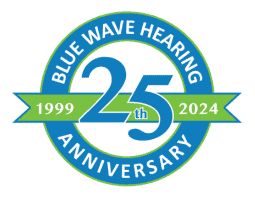- Alcohol and Hearing Health - April 9, 2025
- How Smoking Can Harm Your Ears - March 11, 2025
- Succeeding in the Workplace with Hearing Aids - February 10, 2025
Give Yourself and Your Health the Best Possible Start in 2018. Know the Signs of Hearing Loss and Get Your Hearing Tested!
Hearing Loss Is More Common Than You Think
When it comes to communication, hearing is our most critical sense. Even a relatively mild hearing loss can seriously disrupt how we interact and connect with others.
Healthy hearing requires a number of processes in the inner ear and brain to work properly and correctly interpret the sounds you hear. Inner-ear problems, or ear problems in general, can prevent crucial sound information from reaching the brain, leading to confusion and an inability to hear and understand speech.
Quick Hearing Loss Statistics
- About 48 million Americans have some degree of hearing loss
- Hearing loss is more common in those with a history of smoking, binge drinking, and circulatory disorders such as high blood pressure, cardiovascular disease, and diabetes
- Hearing loss is 5.5 times more common in men than women
- Approximately 50% of Baby Boomers (individuals aged 45 to 64) have a hearing loss
How Do I Know If I Have a Hearing Loss?
The most common type of hearing loss is noise-induced hearing loss (NIHL), which is caused by continual exposure to noise levels greater than 85 dB. NIHL usually occurs slowly over time, and you might not know that you have a hearing loss until it’s been established for several years. Even then, you may assume it’s only a temporary problem, but most of the time, NIHL is permanent.
In the early stages of hearing impairment, the highest frequencies are usually the first to go. Symptoms include difficulty hearing or understanding high-pitched voices, and understanding speech in background noise. People with hearing loss often have difficulty differentiating between words that sound alike, and in particular words that contain S, F, SH, CH, H, TH, T, K, or soft C sounds. These consonants are in a much higher frequency range than vowels and other consonants.
You should contact an audiologist or hearing care provider if you are experiencing any of the following symptoms:
- Asking people to repeat themselves often
- Difficulty following conversations that involve more than two people
- Thinking that others are mumbling or speaking quietly
- Difficulty hearing speech in noisy situations
- Stress from straining to hear what others are saying
- Withdrawing from normally enjoyable social situations more often
If you suspect you or a loved one is experiencing any of the above symptoms, let us help! Contact our practice today to schedule a hearing evaluation.


